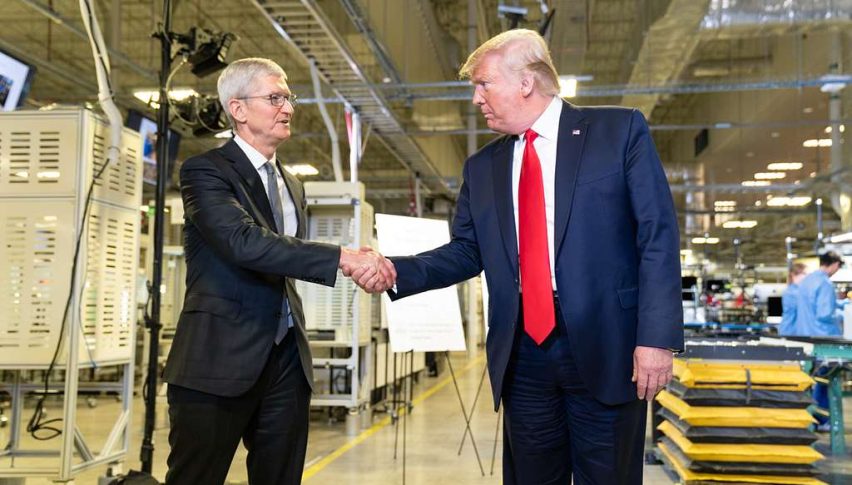AAPL Stock Crash Extends to 10%, Pushing Apple to Invest in U.S. Manufacturing
The Apple stock continues to decline today after the trade tariffs, which is forcing the company to seriously look for US manufacturing,,,

Live AAPL Chart
[[AAPL-graph]]The Apple stock continues to decline today after the trade tariffs, which is forcing the company to seriously look for expanding manufacturing in the US.

Apple’s Stock Tumbles Amid New Trade Tariffs
Apple’s stock had shown resilience in early 2025, outperforming many major tech and AI firms. However, investor confidence took a sharp hit following yesterday’s trade tariff announcement, which was made after US markets had closed. The news triggered a heavy selloff in tech stocks, with Apple shares plunging from their closing price of $223.89 to open below $205.50, marking a steep decline. Throughout the trading day, the stock continued its downward trajectory, hovering around $203 by midday.
Apple Share Price Chart Weekly – Sellers Testing the 100 SMA
On Thursday alone, Apple’s market value dropped by approximately $250 billion, with shares losing up to 8.5% in value. The reason behind this sharp decline is Apple’s heavy reliance on China-based production, making it one of the biggest casualties of the newly imposed tariffs.
Tariffs Could Cost Apple Billions
With Apple manufacturing the bulk of its iPhones in China, these new trade duties could significantly increase production and import costs. If the proposed tariffs push the overall tax rate on Chinese goods up to 54%, Apple will be forced to either absorb the additional costs or pass them on to consumers through price hikes. This situation poses a serious threat to the company’s long-term profitability and operational strategy.
According to BofA Securities, the impact of tariffs could result in $20 billion in additional costs for Apple, slashing gross margins by 500 basis points and leading to an estimated $1.24 drop in EPS for 2026.
Apple Plans Major Investment in U.S. Manufacturing
In response to the economic uncertainty and supply chain risks, Apple has announced plans to invest over $500 billion in U.S. manufacturing over the next four years. This initiative includes the construction of a 250,000-square-foot production facility in Houston, dedicated to mass-producing servers and other critical hardware.
As part of its broader shift toward domestic production and innovation, Apple is also expanding its research and development (R&D) efforts, increasing investments in silicon engineering and artificial intelligence, and launching a training academy in Detroit to develop the next generation of tech talent. Additionally, the company plans to double its U.S. Advanced Manufacturing Fund, signaling a long-term commitment to reducing its reliance on China.
With mounting pressure from tariffs and investors, Apple’s future hinges on how quickly it can shift parts of its supply chain to the U.S. and maintain its competitive edge in the global market.
- Check out our free forex signals
- Follow the top economic events on FX Leaders economic calendar
- Trade better, discover more Forex Trading Strategies
- Open a FREE Trading Account





